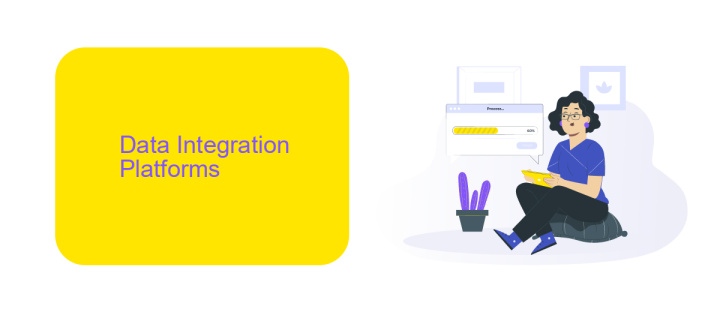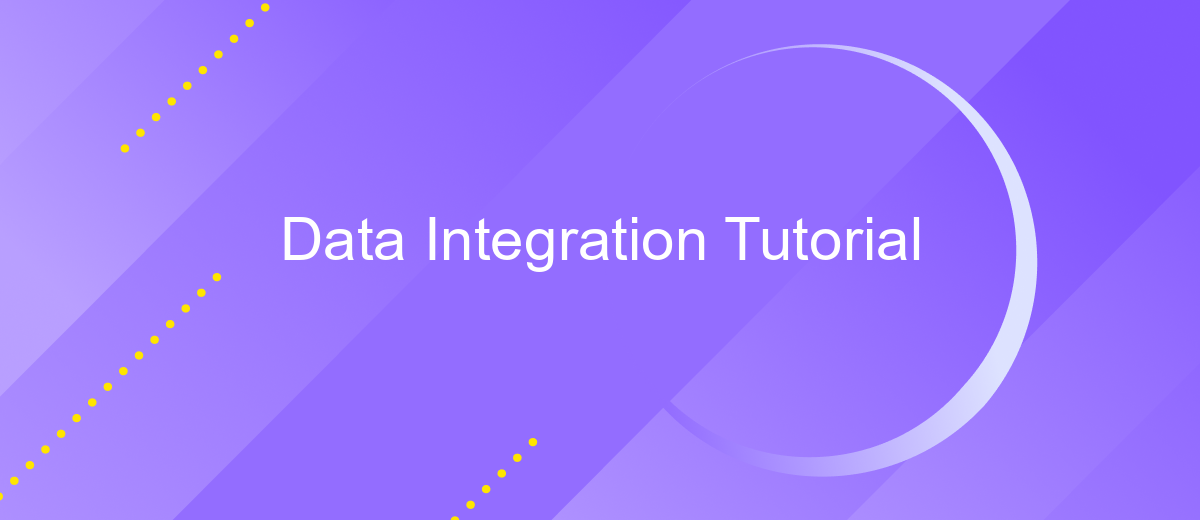Data Integration Tutorial
Data integration is a critical process in today's data-driven world, enabling businesses to combine data from various sources into a unified view. This tutorial will guide you through the essential steps and best practices for successful data integration, helping you streamline operations, enhance decision-making, and unlock valuable insights. Whether you're a beginner or an experienced professional, this guide has something for everyone.
Introduction
Data integration is a critical process in modern business environments, enabling seamless data flow between disparate systems and applications. By consolidating data from various sources, organizations can achieve a unified view, facilitating better decision-making and operational efficiency.
- Centralized data management
- Improved data quality
- Enhanced collaboration
- Streamlined operations
One of the tools that can simplify the data integration process is ApiX-Drive. This service automates the transfer of data between different platforms without the need for complex coding or technical expertise. By leveraging ApiX-Drive, businesses can effortlessly connect their CRM, marketing, and other systems, ensuring that data flows smoothly and accurately across the organization.
Data Integration Platforms

Data integration platforms play a crucial role in modern business environments by enabling seamless data connectivity between various systems and applications. These platforms provide tools and services to extract, transform, and load (ETL) data from different sources into a unified view, making it accessible and useful for analysis and decision-making. They help organizations overcome the challenges of data silos, ensuring that data from disparate sources can be combined and utilized efficiently.
One such platform is ApiX-Drive, which simplifies the process of setting up integrations between various applications and services. With its user-friendly interface, ApiX-Drive allows businesses to automate data workflows without requiring extensive technical expertise. It supports a wide range of connectors, enabling seamless data transfer and synchronization across multiple systems. By leveraging platforms like ApiX-Drive, organizations can enhance their data integration capabilities, streamline operations, and gain valuable insights from their data.
Data Integration Methods

Data integration is essential for businesses to consolidate information from various sources, enabling comprehensive data analysis and decision-making. There are several methods to achieve effective data integration, each with its own strengths and applications.
- ETL (Extract, Transform, Load): This method involves extracting data from different sources, transforming it into a suitable format, and loading it into a target database or data warehouse. ETL is ideal for batch processing and handling large volumes of data.
- Data Virtualization: This technique allows users to access and manipulate data from multiple sources without physically moving it. It creates a virtual data layer, providing real-time data integration and reducing the need for data replication.
- API Integration: Using APIs (Application Programming Interfaces) to connect different systems and applications allows for seamless data exchange in real-time. Tools like ApiX-Drive simplify this process by offering pre-built connectors and automation capabilities.
Choosing the right data integration method depends on the specific needs and infrastructure of your organization. Whether you require real-time data access, batch processing, or seamless connectivity between applications, understanding these methods will help you make informed decisions and optimize your data integration strategy.
Data Integration Challenges and Solutions

Data integration is a critical process for businesses aiming to consolidate data from various sources into a unified view. However, this process is fraught with challenges, including data inconsistency, data silos, and scalability issues. These obstacles can hinder decision-making and operational efficiency.
One significant challenge is ensuring data quality and consistency across different systems. Disparate data formats and sources can lead to inaccuracies and redundancies. Additionally, integrating data from legacy systems with modern applications often requires complex transformations and mappings.
- Data Quality Management: Implement robust data validation and cleansing processes to maintain data accuracy.
- Scalability: Use scalable solutions like cloud-based platforms to handle growing data volumes efficiently.
- Automation Tools: Utilize integration tools such as ApiX-Drive to automate data syncing and reduce manual errors.
- Data Governance: Establish clear data governance policies to ensure data integrity and compliance.
By addressing these challenges with effective strategies and leveraging tools like ApiX-Drive, businesses can streamline their data integration processes. This not only enhances data reliability but also supports better decision-making and operational agility.


Data Integration Best Practices
To ensure successful data integration, it is crucial to establish a clear strategy and define your objectives beforehand. Start by identifying the data sources and understanding the data formats you will be working with. This will help in choosing the right tools and technologies that can handle diverse data types and ensure seamless integration. Additionally, maintaining data quality is paramount. Implement validation checks and cleansing processes to eliminate errors and inconsistencies, thereby ensuring the accuracy and reliability of the integrated data.
Utilizing automation tools can significantly streamline the data integration process. Platforms like ApiX-Drive offer robust solutions for connecting various applications and automating data transfer between them. Such tools not only save time but also reduce the risk of human error. Furthermore, it is essential to monitor and regularly update your integration workflows to adapt to any changes in data sources or business requirements. By adhering to these best practices, organizations can achieve efficient and reliable data integration, ultimately driving better decision-making and operational efficiency.
FAQ
What is data integration?
Why is data integration important?
What are the common challenges in data integration?
How can automation tools help in data integration?
What are the best practices for successful data integration?
Strive to take your business to the next level, achieve your goals faster and more efficiently? Apix-Drive is your reliable assistant for these tasks. An online service and application connector will help you automate key business processes and get rid of the routine. You and your employees will free up time for important core tasks. Try Apix-Drive features for free to see the effectiveness of the online connector for yourself.

